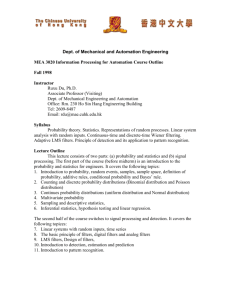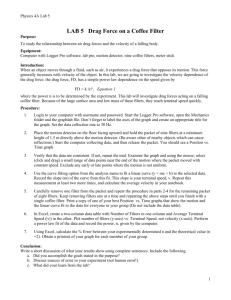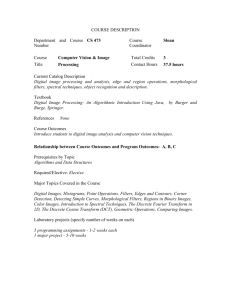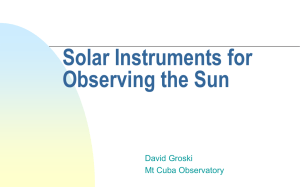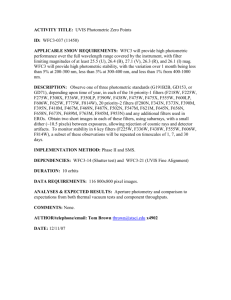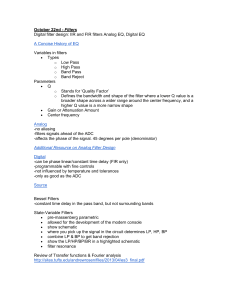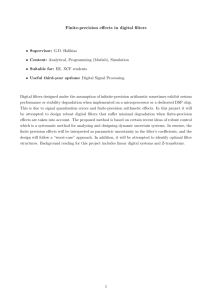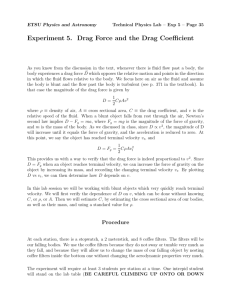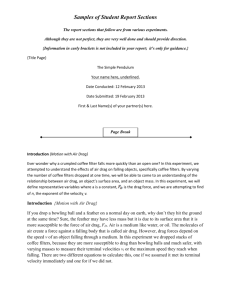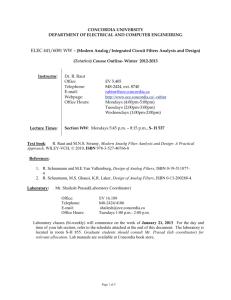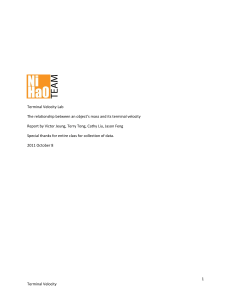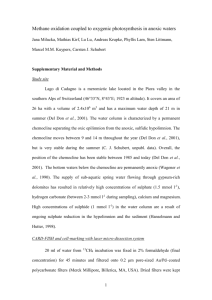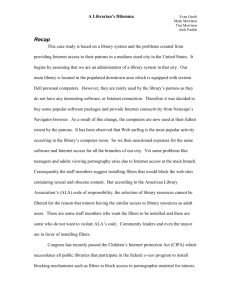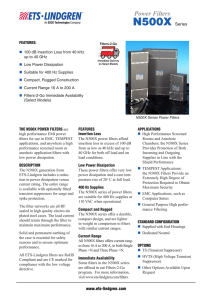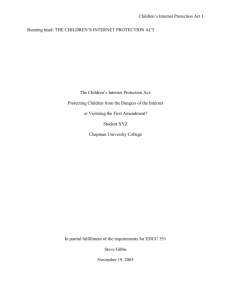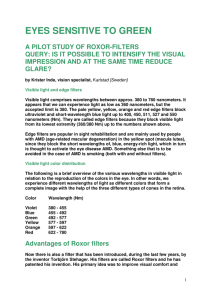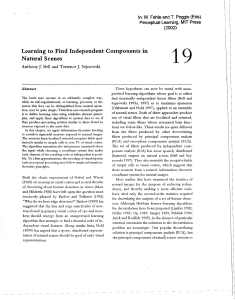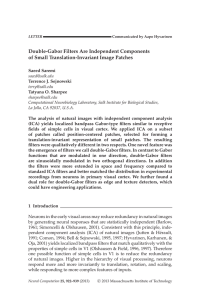Day1: Coffee Filters and Air Resistance
advertisement
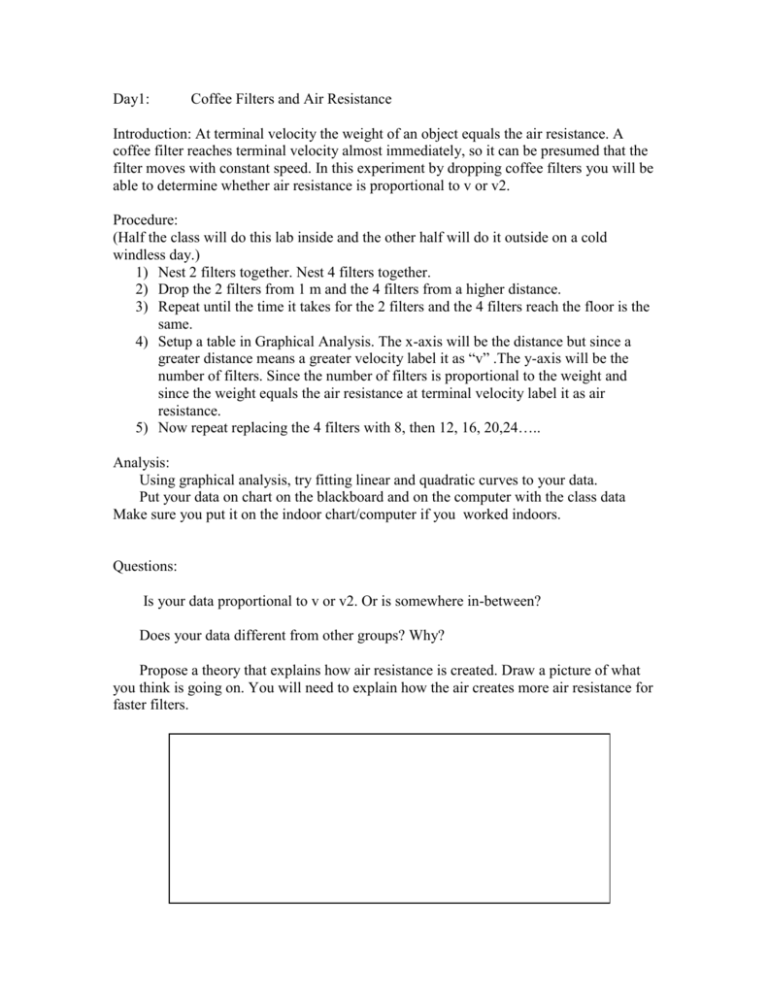
Day1: Coffee Filters and Air Resistance Introduction: At terminal velocity the weight of an object equals the air resistance. A coffee filter reaches terminal velocity almost immediately, so it can be presumed that the filter moves with constant speed. In this experiment by dropping coffee filters you will be able to determine whether air resistance is proportional to v or v2. Procedure: (Half the class will do this lab inside and the other half will do it outside on a cold windless day.) 1) Nest 2 filters together. Nest 4 filters together. 2) Drop the 2 filters from 1 m and the 4 filters from a higher distance. 3) Repeat until the time it takes for the 2 filters and the 4 filters reach the floor is the same. 4) Setup a table in Graphical Analysis. The x-axis will be the distance but since a greater distance means a greater velocity label it as “v” .The y-axis will be the number of filters. Since the number of filters is proportional to the weight and since the weight equals the air resistance at terminal velocity label it as air resistance. 5) Now repeat replacing the 4 filters with 8, then 12, 16, 20,24….. Analysis: Using graphical analysis, try fitting linear and quadratic curves to your data. Put your data on chart on the blackboard and on the computer with the class data Make sure you put it on the indoor chart/computer if you worked indoors. Questions: Is your data proportional to v or v2. Or is somewhere in-between? Does your data different from other groups? Why? Propose a theory that explains how air resistance is created. Draw a picture of what you think is going on. You will need to explain how the air creates more air resistance for faster filters. Sample Data:

